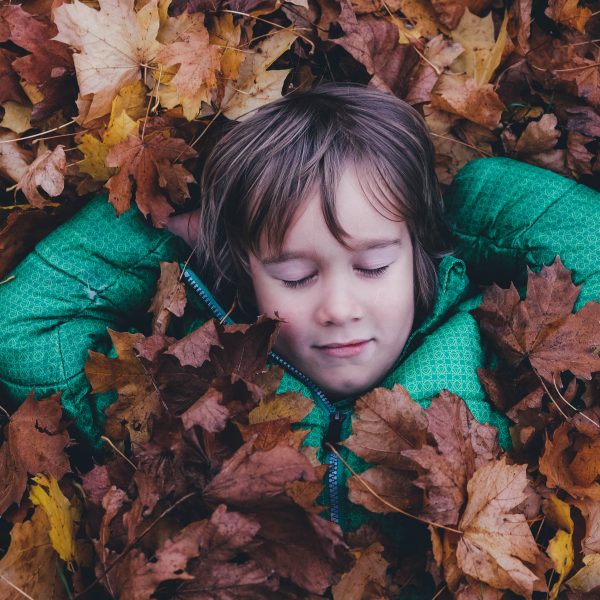New research shows how sensory profiles change in ASD children throughout childhood

The first longitudinal evidence about the trajectories of sensory reactivity patterns during early childhood has been published in Child Development giving invaluable information to those who work with children on the autism spectrum.
Many autistic children have particular preferences for specific sensory stimuli, like focused interest on the flicker of fluorescent lights, pronounced discomfort from a scratchy T-shirt tag or deep cravings for bear hugs, for example. Understanding these preferences and triggers can support children on the autism spectrum to have a more positive experience of learning in mainstream and specialised education settings.
Results from the study provide the first longitudinal evidence about the trajectories of sensory reactivity patterns during early childhood among a large community sample with diverse developmental outcomes, with researchers working with the same cohort for eight years.
In 2013, a team of researchers from the University of Southern California and the University of North Carolina at Chapel Hill began following a cohort of more than 1,500 children, measuring their sensory patterns as the children grew from infancy to school age. Now, the researchers have generated insights into the associations between those sensory changes and various child and family characteristics, including the eventual emergence of autistic symptoms or an autism diagnosis once the children were six or seven years old.
Each child was followed over a six year period to track their individual development, lead author Yun-Ju (Claire) Chen explained.
“At the beginning, we didn’t know which children would develop autism. So it’s incredibly interesting to see that, once they were school age at the end of the study, autistic children’s sensory patterns followed very different trajectories, compared to children with neurotypical outcomes or those with other developmental conditions.”
For infants, sensory issues may be earliest signs of autism
For the study, parents were asked about their child’s sensory behaviors during three childhood stages: at infancy (9-16 months old), at preschool (3-4 years old) and at school-age (6-7 years old). They were also asked about their child’s autistic symptoms, about various developmental concerns and whether or not their child had received any diagnoses.
Data analysis showed that the sensory patterns of autistic children, as well as children with autistic traits (but who had not been diagnosed with ASD), tended to grow stronger over time. In comparison, non-autistic children’s sensory patterns, including those with parent-reported sensory issues, were relatively steadier across development.
That finding may have significant implications for the ways in which scientists conceptualise, identify and study autism, as well as how therapeutic interventions are designed and delivered, beginning in early infancy, to promote developmental outcomes and provide better support for families.
“We used to think that social communication differences were the most important behavioral markers for identifying autism in infancy,” Ms Chen said. “But we found that sensory differences may emerge earlier than social communication differences in infants who later developed autism, and these early sensory differences may cascade into more definitive features of autism, including social-communication differences, later in life. This means that sensory processing functions may be much more important in early detection than we have previously thought.”
The researchers also discovered that children of parents with higher educational levels tended to show more stable or improving sensory patterns. While cautious not to misinterpret that finding, Ms Chen says it may underscore the impact of early interventions upon children’s long-term sensory behaviours.
“My guess is that kids with more highly educated parents may have more access to resources, so that once they are identified with sensory challenges, they are more likely to get timely help from professionals,” she explained. “Of course, we need to do more to decrease disparity for those with lower education levels. But I think this is a promising result because, in comparison to other variables that cannot be changed, early detection and intervention are variables that we can do something about, and that can make a really big difference in children’s and families’ lives.”’
To progress their work the research team is now studying how the launch of a new screening tool can improve the early identification of autism across diverse populations, including Spanish-speaking families primarily of Hispanic/Latino/a ethnicity living in the Los Angeles area.
“The earlier we identify infants at elevated likelihood for autism and begin intervention, the greater the potential for every child to grow to their fullest capacity,” the researchers said. “That hinges on the work we are doing at the insp!re lab – mobilising the most sensitive tools and new findings so that our care systems can provide families and children with access to the best possible individualized supports, and deliver them early, when they matter most.”
To read the study in full please see here.
Popular

Quality
Practice
Provider
Research
Workforce
Honouring the quiet magic of early childhood
2025-07-11 09:15:00
by Fiona Alston

Policy
Practice
Provider
Quality
Workforce
Minister Jess Walsh signals urgent action on safety and oversight in early learning
2025-07-11 08:45:01
by Fiona Alston

Workforce
Policy
Quality
Practice
Provider
Research
The silent oath: Why child protection is personal for every educator
2025-07-17 09:00:31
by Fiona Alston











